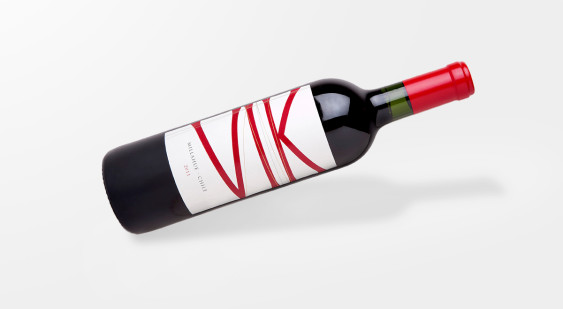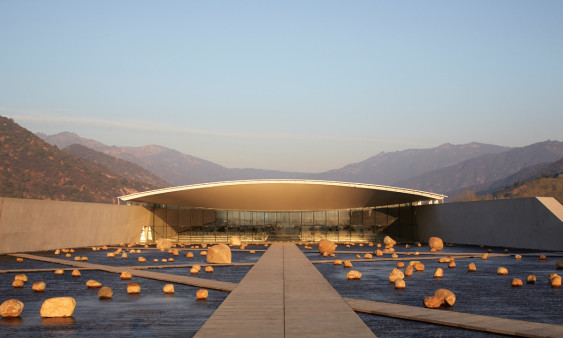In the US, and much of the so-called New World for that matter, wine drinkers are used to referring to wines by the primary grape variety from which they are made, such as Cabernet Sauvignon or Chardonnay.

One wine to rule them all! Some of the world’s best wines are made from blends of grape varieties.
But as I explained in this past post, in the US, a wine actually only has to have 75% or more of a single grape variety in order to be labeled as that variety. That means there are tons of wines out there with other grape varieties blended into them that aren’t necessarily labeled that way. For example, that Cabernet Sauvignon you’re sipping might actually have some Merlot and Cabernet Franc blended into it, among other possibilities. In fact, some of the most famous wines from around the world, such as red Bordeaux or even Champagne, are usually made from blends of grapes.
Why is that? Well, I happen to be down in Chile at the moment, and one of my first stops was at a winery called Viña Vik in the Cachapoal Valley, about two hours south of Santiago. The whole property is about 11,000 acres, and they have plantings of five different grape varieties spread out over about 60 parcels in total. But they only make a single wine, a premium red blend called VIK. You can find it in the United States for about $130-$150 per bottle (or order cases here).

At VIK, they just make one wine, but using five grape varieties.
VIK is a combination of Cabernet Sauvignon, Merlot, Cabernet Franc, Syrah and a grape that has become Chile’s signature variety, Carmenère. The proportion of each variety used changes year to year according to what winemaker Cristián Vallejo and his team think will taste and age best. His aim, he says, is to make “an elegant wine that is round with soft, ripe tannins, and that is easy to drink but still complex.”
By blending all these varieties of grapes from parcels spread out across the property and planted in different soils and different microclimates, the philosophy at Viña Vik and behind Cristián’s winemaking is a “holistic idea of creating a wine where the finished product, the whole, is greater than the sum of its parts,” he says. Hence the blend. In other words, each of those varieties – and drilling down even further, each specific block of each variety – brings certain elements to the final wine.
For example, one parcel of Cabernet Sauvignon grown in a cooler area might have a lightness and freshness to it, while another from a warmer part of the property could exhibit darker berry flavors and a stiffer tannin structure. The Cabernet Franc can lend the blend some refreshing acidity and mineral notes while the Merlot might imbue the wine with softer tannins and some spicy notes.
I could go on and on about the individual varieties, but instead, since it’s Friday, let’s call this a Video Viernes post because I asked Cristián to tell me about blending in his own words in Viña Vik’s spectacular tasting room. Here is what he had to say.
As you can see, Cristián is quite passionate about what he does, and he takes great care not only in explaining the nuances the various grapes bring to VIK, but also how he personally goes about the blending process.
Can you imagine tasting through 60 individual wines to decide how much of each to add to your final product! I just tasted through seven with him, and it was complicated enough. The short version is, he and his team taste through the individual wines again and again as they age in barrel, try blends of various proportions, and wait until they feel a certain “click” that they’ve found the right mix. To me, it sounds like finding the right blend is kind of like trying on a pair of jeans. You can try on dozens of cuts, colors, sizes and brands, but you know instantly when you feel you’ve put on the right ones and see yourself in the mirror that you have found the pair for you.
The next time you’re drinking a bottle of wine, check the label or look it up on the winery website to see if it is, in fact, a blend of varieties and how much of each there is, and see if you can parse out the different qualities of each.

Consider visiting VIK’s gorgeous new winery on a trip to Chile. Photo courtesy of Viña Vik.
In the meantime, if any of you are planning a visit to Chile soon, there is now a stunning 22-suite lodge along with the winery at Viña Vik that has been winning all kinds of accolades and is one of the most exciting new places in the country (more on that in a future post), so you can combine your wine-tasting visit with an overnight stay.
Note: I was a guest of Viña Vik for two nights in September 2015.

